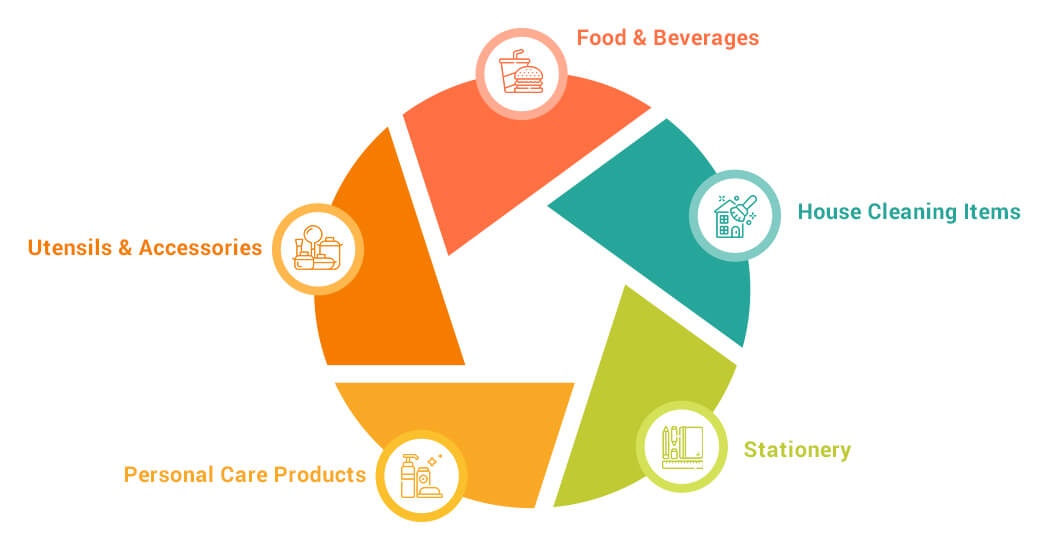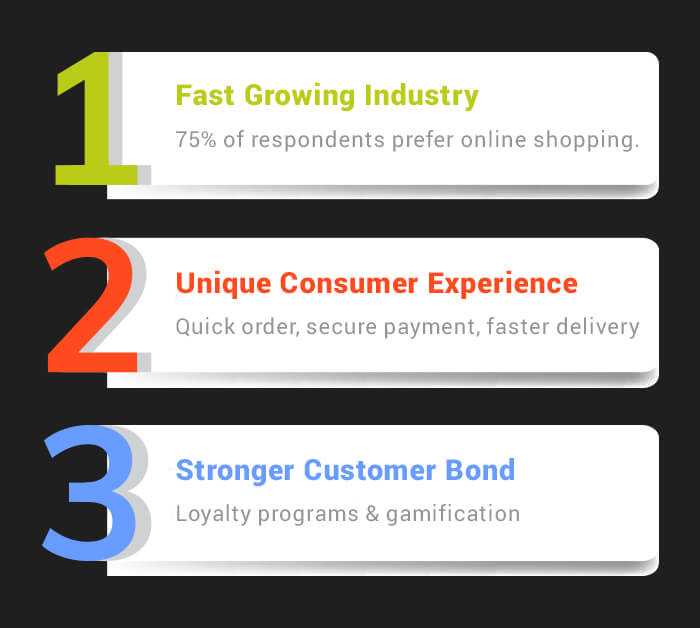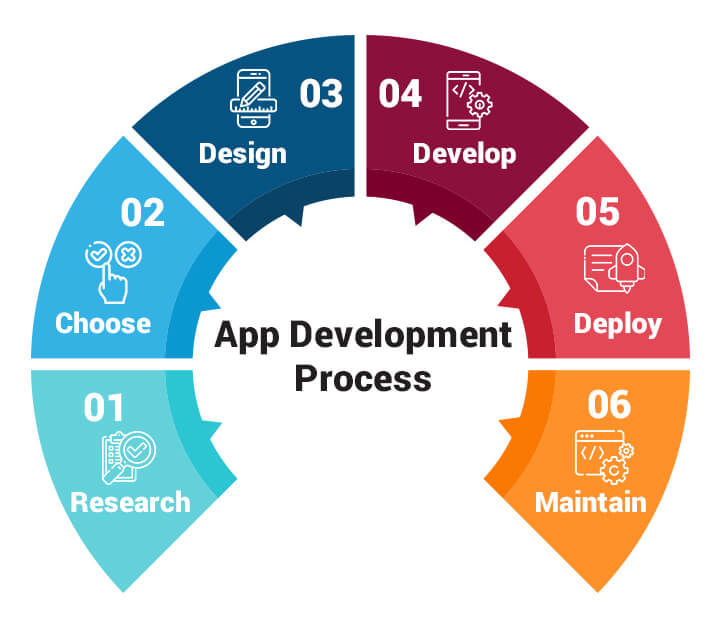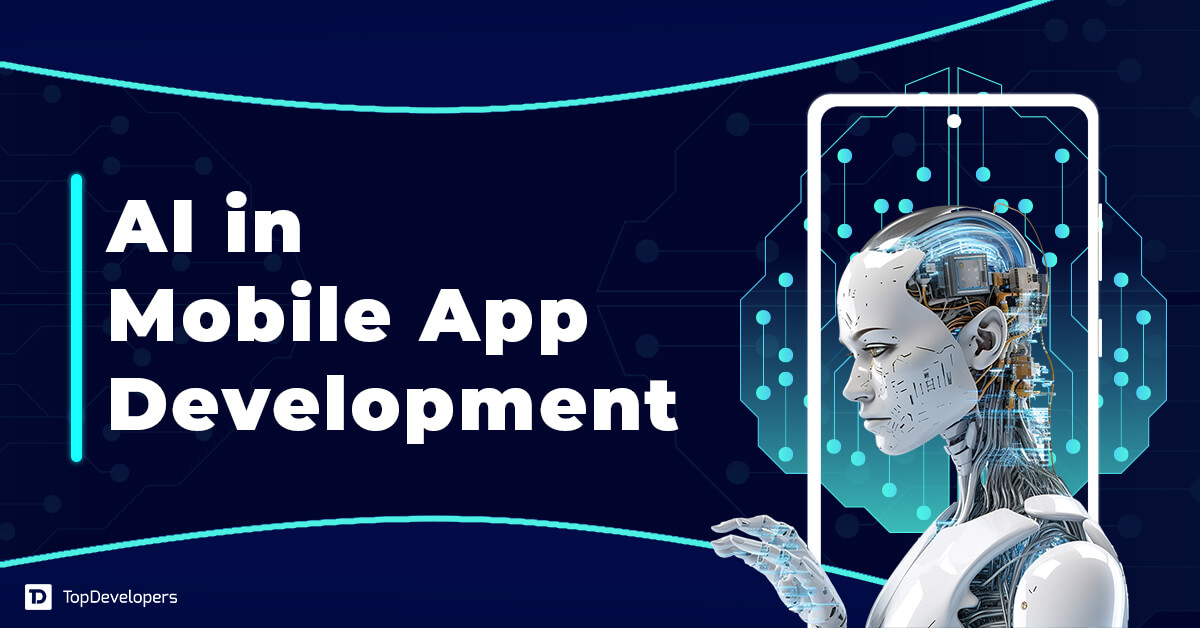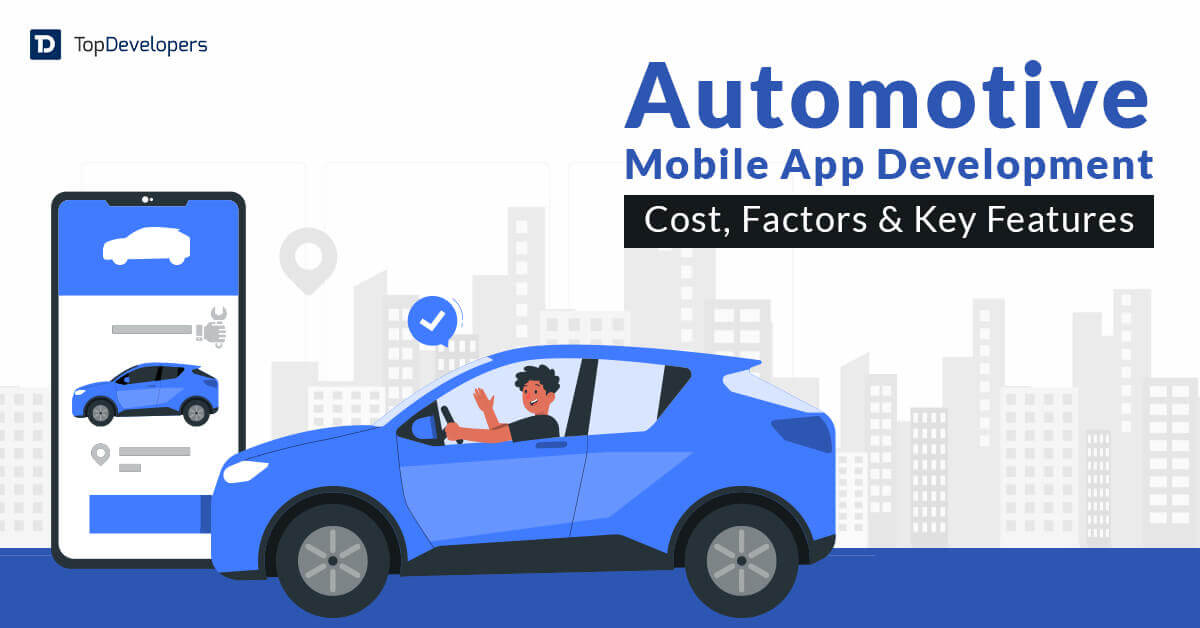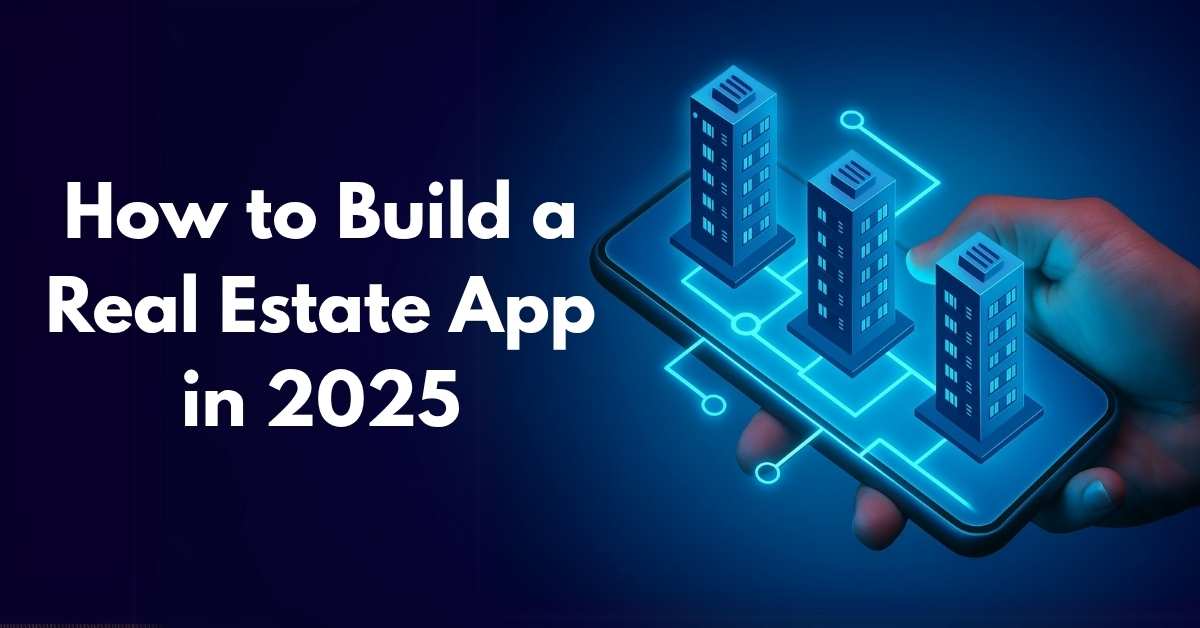
When everything can be ordered and bought online, businesses that lack their online presence shall find it almost illusive to fight their peers and stay competitive. Instacart business model has proved that probably the fastest-growing business today is on-demand grocery delivery. Having hundreds of products on the screen, users today are free to order anything and they are assured to get their goods at their doorsteps within a few minutes.
Revolutionizing your grocery store’s online presence with a custom delivery app is becoming the new norm these days and beyond. This guide will help you through the simplest process of making a grocery delivery application. It is highly useful especially when you are non-technical and want to build a customized solution for your grocery business.
The Grocery Delivery market is expected to achieve a revenue of US$786.80 billion by 2024, growing at a CAGR of 12.74% to reach US$1,271.00 billion by 2028 (Source: Statista). The Retail Delivery segment will dominate with US$599.00 billion in 2024, while China leads globally with projected revenue of US$266 billion. Additionally, the market will see 2,103 million users by 2028, with an average revenue per user (ARPU) of US$0.51k and 20.1% user penetration in 2024.
Other many research firms and marketing agencies have favored the lucrative business of grocery delivery apps and have sensed that it is high time for entrepreneurs to contact a grocery app development company and build a customized app to lead the market. The time is now.
Table of Contents
- What is a Grocery Delivery App?
- Why Invest in a Grocery Delivery App?
- How does the On-Demand Grocery Delivery App Work?
- Innovative Business Models for Grocery Delivery Apps That Will Change Your Game
- How does a Grocery Delivery Application Make Money?
- Features of On-Demand Grocery Delivery App
- Which are the Leading Mobile Apps providing Grocery Delivery Services?
- Team Structure Required to Create a Grocery Delivery Mobile App
- Tech Stack Used in Grocery App Development
- How to Build a Grocery Delivery App in 6 Simple Steps?
- How much does it Cost to Develop a Grocery Delivery App?
What is a Grocery Delivery App?
A grocery delivery app refers to a customized application through which a consumer can order grocery items from a grocery store that can be nearby or at some distance. Users have their accounts on such applications and they can browse from the list of grocery items and specific grocery stores near them.
The grocery delivery segment comprises food and non-food products that can be purchased from grocery stores on daily basis. The items are now not limited to food and beverages today because the grocery section has grown manifold since its inception.
Grocery delivery systems were in place but they got a tremendous boost after the recent pandemic. People avoided stepping out of their homes and started ordering groceries online through various mobile apps and channels. Quick Commerce, mCommerce, eCommerce, and other segments came into the picture as routine tasks for online grocery shopping.
Why Invest in a Grocery Delivery App?
The grocery delivery application has been quite popular these years because of the latest trends and consumer demands of buying everything online. Furthermore, the wave of the last-minute hyperlocal, quick-commerce, or 10-minute delivery app has brought a revolution in online purchases because consumers can order anything that they need instantly. Here are three solid reasons why invest in grocery delivery apps.
Fast-growing market: According to Statista, more than 75 percent of people opined that they would prefer purchasing everything online. The latest types of eCommerce apps are stealing the limelight from traditional websites for retailers and brands. The latest technologies such as voice commerce, social and quick commerce, and last-mile commerce have been quite popular in today’s grocery market.
Unique Consumer Experience: Modern grocery apps prioritize user satisfaction by providing a seamless shopping experience. Features like secure payment gateways, real-time shipment tracking, and instant delivery (within 10 minutes in some cases) ensure unparalleled convenience for consumers. Personalization options, such as tailored product recommendations and custom shopping lists, enhance the overall experience, fostering loyalty.
Rising Demand for Sustainable Solutions: Eco-conscious and health-conscious consumers are increasingly favoring apps that promote sustainable practices. Grocery delivery apps offering organic, pesticide-free, and farm-to-table options are becoming highly popular. This focus on sustainability not only attracts a niche audience but also aligns with global trends toward environmental responsibility.
Stronger Customer Relationships: Loyalty is the backbone of any successful business. By offering high-quality services and features like regular discounts, subscription models, and personalized customer support, grocery delivery apps can foster stronger relationships with their users. A satisfied customer base translates into repeat business, positive word-of-mouth, and a competitive edge.
Don’t let your competitors get ahead of you!
Start delivering groceries with your app now!
How does the On-Demand Grocery Delivery App Work?
On-demand grocery delivery apps work in a straightforward way, ensuring convenience for users. Here’s a breakdown of the process:
Product Search and Selection:
Users log into the app and search for their desired products. They can browse randomly or explore specific grocery stores registered on the application.
Once users find their desired items, they select the quantity and add them to their cart.
Address Entry:
After finalizing their selection, users enter the delivery address where their groceries should be delivered. The app validates the address for accurate delivery.
Secure Payment:
Users proceed to a secure payment gateway. They can choose from multiple payment options, including credit/debit cards, digital wallets, or a cash-on-delivery option.
Order Placement:
Once payment is confirmed, the app sends the order details to the selected grocery store.
Order Preparation:
The vendor packs the ordered items, ensuring quality and accuracy.
Delivery Partner Allocation:
The app assigns a delivery partner to pick up the order. The delivery partner receives the pickup and drop-off details.
Order Delivery:
The delivery partner collects the order from the vendor and delivers it to the user’s doorstep. Users can track the delivery in real-time.
Innovative Business Models for Grocery Delivery Apps That Will Change Your Game
The market for on-demand grocery delivery has been quite competitive these years especially after the pandemic changed people’s habit of buying things online. You need to be quite clear in venturing into this sector before you go to develop a custom grocery delivery solution.
You need to check the types of business models to select which one is suitable for your business; of course, demographic and psychographic studies would play a crucial role.
Aggregator app model
The most common type of grocery delivery app business model is an aggregator model. It simply lists out the nearby grocery shops to users. The user is free to choose anyone from the list. Once chosen, the user can browse through the menu offered by the store along with quantity and price. The user can then keep picking the items they want and finally go for the checkout. The selected items will be displayed at the end along with the total price that users can pay through various payment gateways. Once the order is placed after the payment option is selected, the users can track their parcels live.
Instacart: This leading app in the U.S. allows users to shop from local grocery stores and have their items delivered by personal shoppers. Its success lies in its vast store partnerships and user-friendly interface.
Multi-Vendor Marketplace app model
Quite similar to the grocery store aggregator model, this model additionally offers delivery partners who will pick up the grocery from one place and drop off them all at the users’ doorsteps. The delivery persons are kept on standby so that they can pick up and drop off groceries when an order is made.
Amazon Fresh: By integrating its delivery network, Amazon Fresh offers quick delivery from multiple stores while maintaining high customer satisfaction.
Single store or personalized grocery delivery app model
Dedicated to one particular grocery shop, the single-store app is a grocery delivery app sought by grocery shop owners. In other words, if a local grocery store’s owner wants to build a customized app for his or her own’s sake, a single-store app is the outcome.
Bigbasket Storefronts: Bigbasket’s single-store model for local retailers helps individual stores digitize their operations and connect with customers directly.
Grocery chain model
A little more extensive version of the single-store app model is the grocery chain model wherein a businessperson owns more than one grocery outlet – it could be within a town, city, or even country. All grocery stores and their operations are brought on a single mobile application and can be handled through it.
Kroger: One of the largest grocery chains in the U.S., Kroger’s app allows users to browse, order, and receive deliveries from any of its stores across multiple cities.
Hyperlocal grocery delivery
Hyperlocal grocery delivery refers to grocery pickup from one place and dropping off at a particular destination, the doorsteps of buyers. It has been quite a popular model in grocery delivery as here the business person owns an app that simply brings all three a buyers, a vendor, and a delivery partner on the same board.
Blinkit (formerly Grofers): A pioneer in India’s hyperlocal delivery market, Blinkit offers groceries within 10 minutes of placing an order, leveraging its robust delivery network.
Farm-to-Table Grocery Delivery Model
The recent pandemic has made everyone health-conscious, and the demand for organic, fresh, and pesticide-less food has been raging ever since. Grocery delivery applications that bring vegetables and other grocery items directly from farm to home are the need of an hour. Here, consumers can directly order required items from farm-fresh stores that assures superior quality.
Farmstead: This U.S.-based app specializes in delivering fresh produce directly from local farms to consumers, reducing food waste and promoting healthier choices.
Looking to make a customized grocery delivery app for your business?
How does a Grocery Delivery Application Make Money?
What are the ways in which grocery stores can generate income through a grocery delivery app? This question comes to mind of every grocery store owner. There are several ways to earn revenue from an application. For an on-demand grocery delivery app, things are not new. As a grocery delivery app owner, you can charge fees or commissions to grocery stores or directly to your consumers. Here are a few monetization ideas –
- In-app ads: give app space on rent for ads such as video, banners, native, reward, and interstitial.
- Subscription: one of the most famous app monetization models is subscription wherein you charge users for a specific subscription or a vendor for more features or facilities on the app.
- Data monetization: data is the new fuel. Sharing specific data under rules and regulations will help you earn great revenue.
- Transactional apps: charging a small transaction fee on each order or placement of the company shall get you a steady income.
- Affiliate programs: sharing is caring! Based on the give-and-take business model, affiliate marketing is something you can avail of. Good revenue is assured when you share others’ links and products, and they share yours.
- Sponsorships: Sponsorship is another way to monetize your grocery delivery app. Offering free marketing and other benefits, you can ask companies and brands for funds.
Features of On-Demand Grocery Delivery App
Essential grocery delivery app features that can help you to maximize profit can be divided into general and unique ones. While general app features are common and make an app usable, the unique or advanced features shall give your app an extra edge over other competitors in the market.
General Features
User registration: new registration and login should be the basic features through which users can get into their personal space. Various ways to log in (through email, phone number, and/or social media) shall be an added advantage.
Search: one of the basic features of an app is a search option. A wide range of grocery products can be listed through search. Users can then select the items.
Shopping cart: selected items’ quantity along with costs and the total are displayed in the shopping cart. Users can have a glance at their cart at any given point in time.
Secure payment: to win customers’ trust, offering various payment methods such as eWallet, bank transfer, credit and debit cards, and other modes forms a basic feature.
GPS-based features: the locations of users and grocery stores are important because the delivery partners would pick up the parcels and drop them off at buyers’ doorsteps only if a location is accurate and not confusing.
Geolocation In Mobile App: What are the top benefits of incorporating it?
Notifications: notifications and alerts of all kinds are appreciated as general features of the online grocery delivery app. Shipment whereabouts, offers and discounts, and payment initiation are a few notification alerts that fall under general features.
Feedback and reviews: to build trust, users rely on feedback and reviews. Allowing these as general features will help your app display the most favorite items and grocery stores. It shall increase the user base overall. Also, it’ll help store owners improve themselves.
Helpdesk: for any application’s success, customer support is the backbone. Any glitch, concern, complaint, or feedback should be shared as early as possible with customer care. In grocery delivery mobile apps, this can be achieved through deploying customer care executives or can simply be handled through chatbots.
Unique features
Dark Mode: A dark theme improves usability during nighttime and reduces eye strain, enhancing user satisfaction.
Augmented Reality (AR) Shopping: Enable users to virtually “see” products, such as fresh produce or packaged goods, before purchasing, making the experience more interactive and informed.
Voice Search and Commands: Integration of voice assistants like Siri, Google Assistant, or Alexa for hands-free operation, making the app more accessible and convenient.
Nutritional Information: Display details like calories, sugar content, and allergens for health-conscious users to make informed decisions.
Comparison Feature: This allows users to compare prices and quality across different stores or products to choose the best option.
Recurring Orders: Offer an option to set up weekly or monthly recurring orders for frequently purchased items.
Personalized Recommendations: Use AI-driven algorithms to suggest products based on user purchase history and preferences.
Loyalty Rewards and Gamification: Encourage customer retention with reward points, badges, or discounts for frequent purchases.
Eco-Friendly Delivery Options: Provide users with choices like sustainable packaging or carbon-neutral deliveries to cater to environmentally conscious shoppers.
Multi-Language Support: Expand your app’s reach by offering support for regional languages, making it more inclusive.
A wishlist/favorite: users shall be able to bookmark or mark their favorite grocery shops and items with stars so that they can easily find them and repeat the order as and when they want. This saves time and adds value to your app.
Essential nutritional information: an advanced feature on the grocery delivery app would be complete nutrition information such as calories, sugar, and salt content in the food and drink items. This would make health-conscious users happier.
Comparison: product and price comparison could be a very useful advanced feature on a grocery delivery mobile application. Users can tally products and prices in other grocery outlets and can choose the best option that saves them money.
Want to provide your customers with a more convenient shopping experience?
Let’s create your grocery delivery app now!
Which are the Leading Mobile Apps providing Grocery Delivery Services?
There are many renowned mobile apps for grocery delivery. If you want to excel in the business, you may study each of them and learn the pros and cons. During the customization of your grocery delivery app, you can address the pain areas and concerns of users that other peers lack.
Here is the list of top grocery delivery mobile apps in 2023 –
- Walmart Grocery
- Instacart
- Shipt
- Amazon Prime Now
- FreshDirect
- Peapod
- Kroger
- DoorDash
- Hungryroot
- Gorillas
- GoPuff
- Dija
- Postmates
- Getir
- Zapp
- Beelivery
- Zepto
- Dunzo
- Blinkit
Ready to take your grocery business to the next level?
Create your grocery delivery app today!
Team Structure Required to Create a Grocery Delivery Mobile App
Online grocery delivery application requires a special task force who are experienced in building software tools. Not limited to one department, a customized software app development for grocery delivery caters to multiple departments and experts. Here is the team structure required for your project –
- Project Manager
- Mobile App Developers
- Front-End Developers
- Back-End Developers
- Quality Assurance Expert
Tech Stack Used in Grocery App Development
Based on the technology platform you choose plus the size and complexity of a grocery delivery app, the tech stack used differs. Nevertheless, here we list the most common tech stack for an app for on-demand grocery –
- Back-end development – PHP, Laravel, Node.js, .NET, Java,
- Front-end development – React, Angular, Vue.js
- Databases – MySQL, PostgreSQL, Oracle
- Android development – Java, Kotlin
- iOS Development – Swift, Objective-C
- Cross-platform mobile development – Flutter, React Native
Want to Include All the Latest Technology in Your Grocery Application?
How to Build a Grocery Delivery App in 6 Simple Steps?
To build a customized grocery delivery app successfully, you need to have a step-by-step process of development. Each stage requires a strategically driven approach wherein you sync with the development team and discuss the whereabouts of your project. Mobile app development companies may adapt one or more methodologies to create an application such as waterfall and/or agile to proceed with the customization of your product.
Here is the most common procedure that is being followed by top mobile app development companies around the world.
Research and Analysis
Begin with thorough market research to understand consumer preferences, industry trends, and competitor strategies.
- Identify your target audience using demographic and psychographic analysis.
- Study top-performing grocery delivery apps to understand their strengths and areas of improvement.
- Highlight gaps in the market to offer unique features that set your app apart.
Define Objectives and Choose a Development Partner
- Clearly outline your business goals and requirements for the app.
- List key features such as payment integration, live tracking, and push notifications.
- Choose a reputable mobile app development company based on their expertise, portfolio, and reviews. Look for firms experienced in grocery or eCommerce app development.
- Evaluate pricing models and support services offered by potential partners.
App Design
The design phase is critical to ensuring a seamless user experience (UX).
- Work with UI/UX designers to create intuitive layouts and wireframes.
- Focus on responsive designs that adapt to different screen sizes and devices.
- Incorporate features like easy navigation, minimal clicks for checkout, and clear visuals for product listings.
- Prioritize accessibility features, such as voice commands and font-size adjustability.
App Development
This is the stage where your app comes to life. Collaborate closely with the development team to bring your vision to reality.
- Choose the right tech stack based on your app’s complexity and platform requirements (e.g., Flutter for cross-platform, Swift for iOS, and Kotlin for Android).
- Implement Agile or DevOps methodologies to ensure iterative development and faster delivery.
- Focus on core functionalities such as user registration, payment systems, and order tracking during initial development (MVP stage).
Testing and Quality Assurance
Rigorously test the app to ensure it is free of bugs and offers a seamless experience.
- Conduct functional, performance, and usability testing.
- Use automated testing tools for faster and more efficient bug detection.
- Gather feedback from a small group of beta testers to identify areas for improvement.
Deployment and Maintenance
Once the app is thoroughly tested, it’s time to launch it on the desired platforms (e.g., App Store and Google Play).
- Optimize your app store listings with keyword-rich descriptions and high-quality visuals to attract downloads.
- Post-launch, establish a maintenance plan to ensure the app runs smoothly. This includes regular updates, feature enhancements, and addressing any technical issues.
- Monitor user feedback and analytics to continuously improve the app’s performance and user experience.
How much does it Cost to Develop a Grocery Delivery App?
The cost to develop an on-demand grocery delivery app is a major factor for any business, be it a startup or enterprise. It is because it takes a major chunk of your budget and thus affects your overall production cost and price of services/products.
The mobile app development cost is based on several factors. A few of the most important ones are mentioned below.
Complexity and size: The simpler the app, the lesser the budget- it is the universal rule for any mobile app. A grocery delivery app with minimum screens shall cost you less as compared to a full-fledged system. As you add functions and features to your grocery store app, the cost increases. The new concept of the grocery super app which contains almost everything related to groceries shall cost you the highest compared to Minimum Viable Product (MVP) Development which has minimum cost.
Outsourcing destination: The outsourcing of mobile app development cost in India shall be way less than what you get quotes from companies in the US and the UK. The reason is simple, countries like India are outsourcing hubs where developers can be hired at affordable rates. Also, you may be presented with different hiring models with different prices or charges.
Tech platform and security: The price of app development also depends on the chosen technology stack and the level of security you want in your app. For instance, the iOS app development for grocery delivery may cost you a bit more as compared to Android app development. Even further, cross-platform app development shall be much more affordable as you use a single code to run your app on both operating systems.
All in all, there is no narrow range of costs to build a grocery delivery app. A wide range is expected from $35,000 to $500,000 to create a customized application for grocery delivery; nevertheless, discussing with your tech partner about having a clear idea of a budget is recommended.
How to build a grocery app faster and on a leaner budget?
Frequently Asked Questions Grocery Delivery Application
Why do I require grocery delivery application?
Online grocery shopping is one of the latest trends and home delivery of groceries is just the right thing that people are looking for. Also, it has a proven track record of offering great business to grocery store owners. Furthermore, you can have a grocery delivery app to increase customer, sales, and hence expand your business further. Hence you can say it is a profitable venture for you.
How do I create a grocery delivery app?
Grocery delivery app development is a lengthy process -it starts with market and consumer research, designing and development, and then finally deployment. You need to follow the process step-by-step. Or you can hire experienced mobile app development companies with experience to create an app for your grocery business.
How can I find the best grocery delivery app development company?
You can find the top on-demand grocery app development company by checking their portfolio and past work in the same industry i.e., grocery. Also, a company that offers quality solutions at reasonable costs and a company that has international certifications (such as ISO) is suitable for your project. You can also choose to contact top directories providing a list of companies such as TopDevelopers.co to choose the right one for you.
How long does it take to develop an app like Instacart for my grocery store?
Development of a clone app such as Instacart can take up to one to six months depending on the features you want to add, amend, or remove; however, only a clone app development solution provider can help you estimate the development period and cost for the same.
 Avantika Shergil
| Dec 13, 2024
Avantika Shergil
| Dec 13, 2024
Avantika Shergil is a technology enthusiast and thought leader with deep expertise in software development and web technologies. With over 8 years of experience analyzing and evaluating cutting-edge digital solutions, Avantika has a knack for demystifying complex tech trends. Her insights into modern programming frameworks, system architecture, and web innovation have empowered businesses to make informed decisions in the ever-evolving tech landscape. Avantika is passionate about bridging the gap between technology and business strategy, helping businesses build customized software and website, and understand about different tools to leverage effectively for their ventures. Explore her work for a unique perspective on the future of digital innovation.
